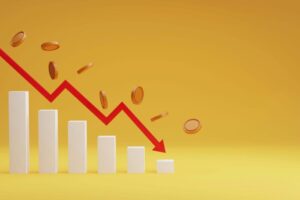Earnings recovery
As equity investors, we expect earnings to lead share prices. During the 2003 to 2007 period where ‘Value’ outperformed, European earnings growth was much stronger than in the US and, also globally. European value at that time – not too dissimilar to today – was dominated by cyclical businesses.
Source: Refinitiv, 31 Dec 2020
Already we are seeing an improvement in earnings from those areas which suffered most at the start of the pandemic. This was confirmed by the recent 4Q earnings season with the more economically sensitive sectors delivering much better results than were expected.
Source: Refinitiv, 28 Feb 2021
European banks – often perceived as the most risk-on ‘Value’ play – have been standout performers in particular, registering strong beats across the majority of metrics used to assess the sector. At the same time, banks have been steadily building excess capital, meaning they have strong balance sheets and little risk of issuing new shares – a marked difference to post-GFC. Obviously in the short term, banks are prohibited from returning this capital to shareholders but from October this year we believe the sector should be able deliver yields well in excess of market averages.
The return of inflation
The collapse in GDP brought about by the pandemic put significant downward pressure on inflation last year. As economies re-open we expect a strong recovery in YoY inflation, partly due to the very depressed prints in 2020, but also due to the significant rise in oil and other commodity prices.
For quite some time there was a growing fear amongst investors that Europe could find itself in a deflationary spiral, similar to what happened in Japan. At the very least, a pickup in inflation should soothe some of these fears. It’s easy to conclude many of these effects are transitory in nature, but we shouldn’t underestimate the second-round effects of higher commodity prices. In due course these should translate into higher output prices.
At the same time, we expect to see a continued improving pricing environment in early cyclical areas, particularly where capacity has been constrained by a lack of capital.
Conclusion
We remain optimistic about the prospects for the most attractively priced parts of the market: short duration and cyclicality. For cyclicals to work we need to see a combination of policy support, economic recovery, attractive valuations, and the names being under owned. We believe we have all four concurrently today.
Meanwhile, exposure to short duration Value offers a certain level of risk mitigation when yields increase (due to rising inflationary expectations), offering a natural hedge for diversified portfolios at a time where positive correlations amongst most other assets have rarely been higher.
The Pandemic has been the key trigger for major policy shift which together with the underlying recovery from lows sets Europe up for multi-year above trend growth as the economies are unlocked throughout 2021.











